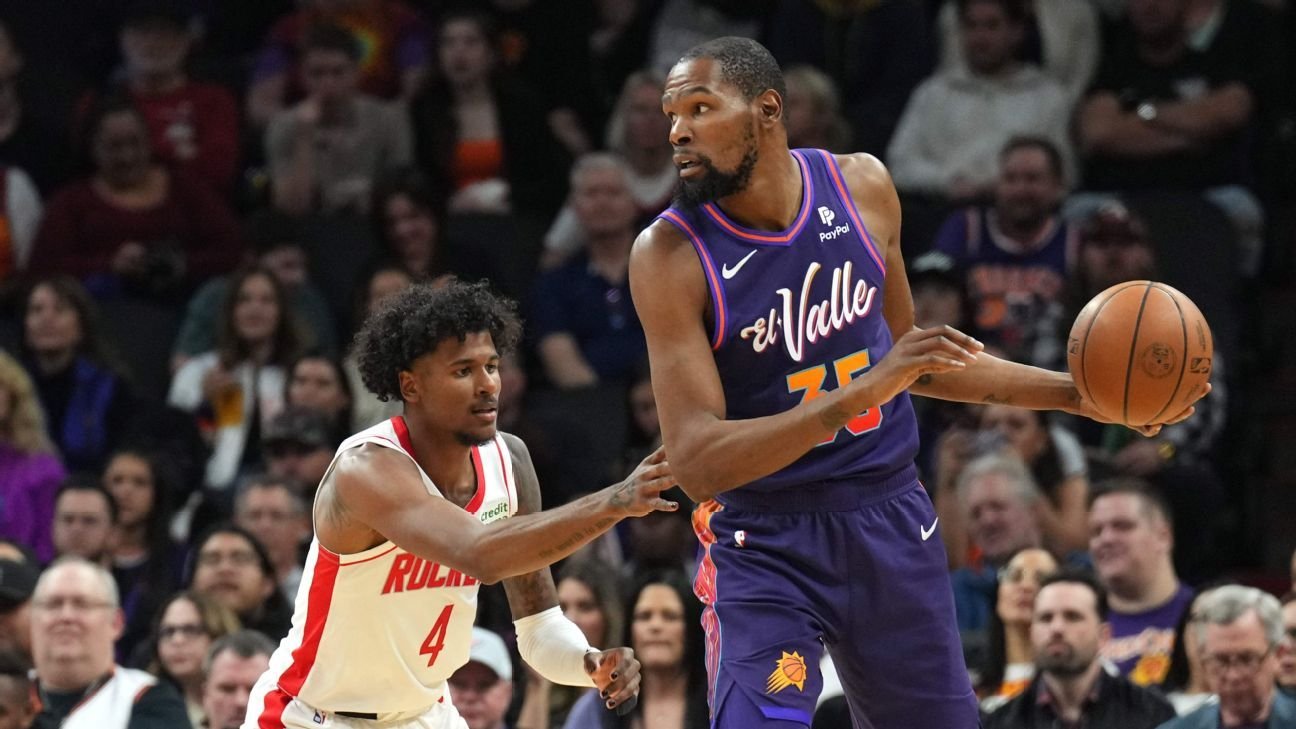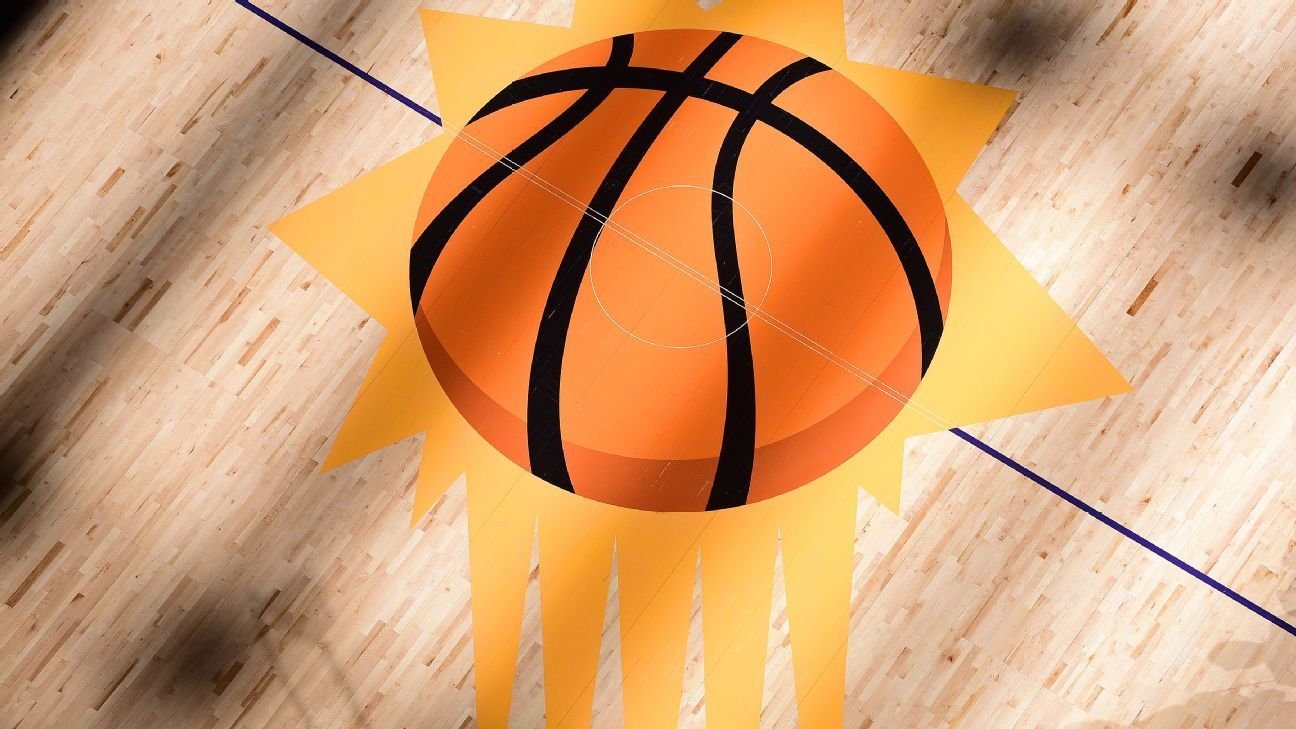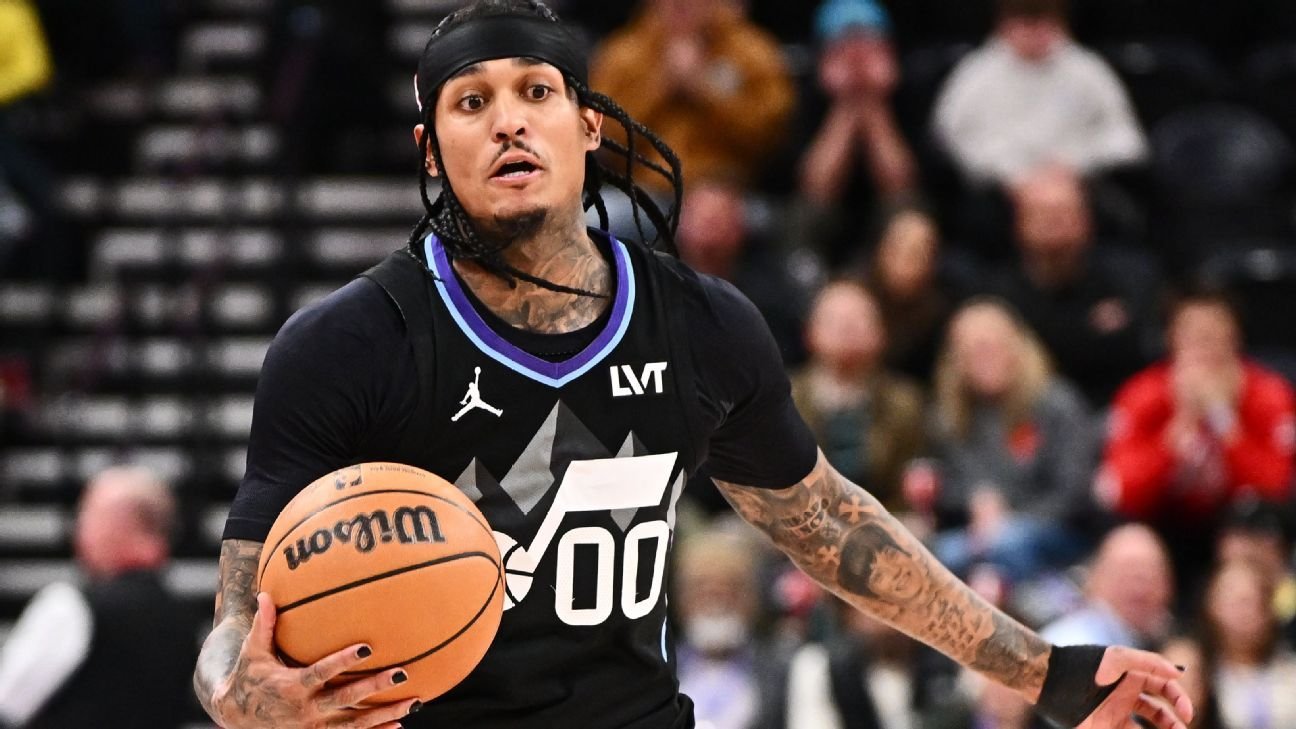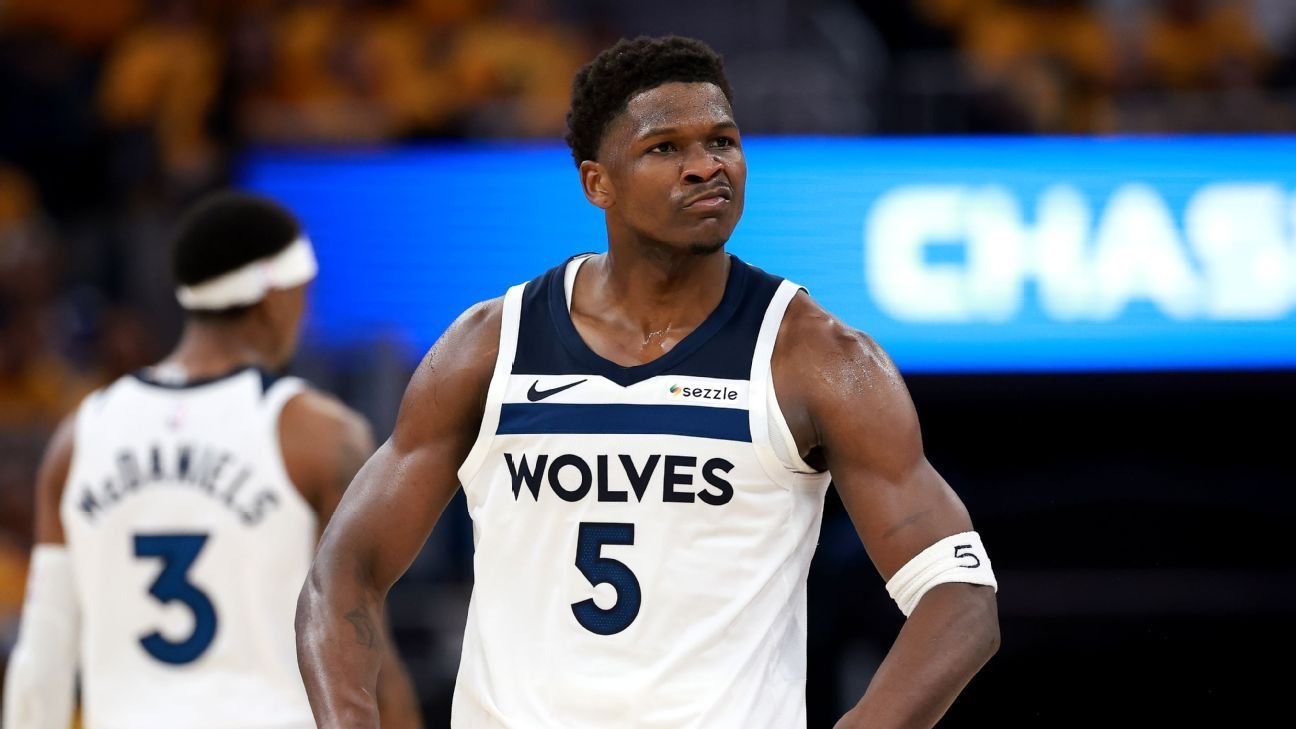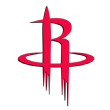
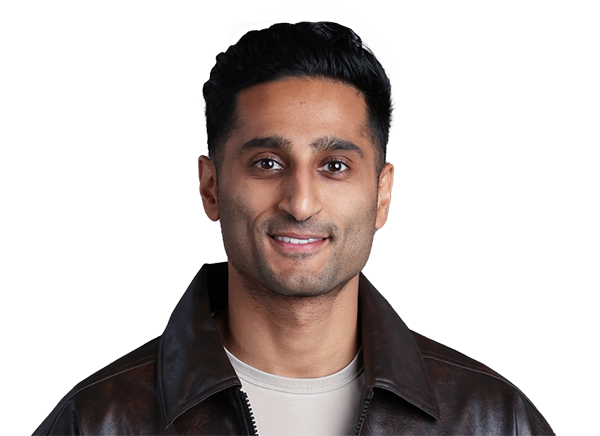


It’s not every day the NBA world gets a Game 7 of the Finals and a future Hall of Famer changing teams via blockbuster trade.
But just hours before the Oklahoma City Thunder and Phoenix Suns play for the 2025 title (8 p.m. ET, ABC), the Phoenix Suns and Houston Rockets linked up to send Kevin Durant to Houston in a deal for Jalen Green, Dillon Brooks, the No. 10 overall pick in Wednesday’s draft and five second-rounders.
Which franchise won the trade? How will Durant fit within the Rockets’ young roster? Are the Suns going full rebuild? ESPN NBA insider Kevin Pelton grades the deal from every angle.
 Houston Rockets: B+
Houston Rockets: B+
There was a strange contrast over the last month as discussion of Durant’s next destination heated up at the same time the 2025 NBA playoffs were reaching their conclusion. Youth and depth led the Pacers and Thunder to the NBA Finals, yet teams were competing to catch them by giving up multiple contributors to bring in Durant, who will turn 37 around the start of training camp.
Coming off finishing second in the West with only one starter (guard Fred VanVleet) older than 28, the Rockets were surely best positioned to thread the needle of surrounding Durant with enough talent to contend for a championship — particularly as the price dropped to the point where they didn’t have to include any of their most prized young players in return.
The seven-game series Houston lost to the veteran-laden Golden State Warriors in the opening round exposed the Rockets’ need for more half-court scoring punch. The Rockets ranked 22nd in points per play on their first attempt to score outside of transition, per Cleaning the Glass, ahead of only the Orlando Magic among playoff teams.
During the regular season, Houston was able to compensate with frequent use of transition and by dominating the offensive glass. According to Cleaning the Glass, no team averaged more points per missed shot on second chances. Both of those factors tend to dry up in the playoffs, especially late in close games. The Rockets went 0-3 in “clutch” games against the Warriors, posting an ugly 91 offensive rating with the margin inside five points in the last five minutes of those games per NBA Advanced Stats.
Although Durant is no longer as singular a scorer as in his prime, when he posted a true shooting percentage (TS%) at least 15% better than league average nine times according to Basketball-Reference, he’s still as good as just about anyone creating his own offense. Among players with a usage rate of 28% or higher in at least 500 minutes last season, only Denver Nuggets three-time MVP big man Nikola Jokic surpassed Durant’s .642 TS%.
The contrast with Green especially favors Durant. Also a No. 2 pick, Green had Houston’s highest usage rate last season with a below-average .544 TS%. (All-Star center Alperen Sengun, who had the team’s second-highest usage, wasn’t any better at .545 but makes more plays for others and has scored more efficiently in the past. Green’s TS% was a career high.)
All the Rockets’ young stars faced a tough adjustment to the playoffs, but none more so than Green, who averaged 13.3 PPG on 37% shooting. His 38-point Game 2 was the only time Green surpassed 12 points or shot better than 40% in the series. Essentially, Golden State condensed all the fears about Green’s weaknesses as a leading scorer into one, salient seven-game sample.
0:58
The numbers behind KD’s trade to the Rockets
With Kevin Durant heading to Houston, check out some key statistics and facts from his time with the Suns.
The bigger loss for Houston in the short term will surely be Brooks, whose arrival was key to the Rockets’ rapid evolution from 60-plus losses in both 2021-22 and 2022-23 to 52 wins last season. Along with VanVleet and coach Ime Udoka, Brooks helped transform Houston’s defensive culture. And as much as the Rockets utilized depth to finish atop a crowded pack of West contenders during the regular season, they’re suddenly thin on the perimeter.
Amen Thompson will undoubtedly be a key part to solving whatever issues this trade creates. Thompson, who got my vote for Defensive Player of the Year, surpassed Brooks as Houston’s perimeter stopper last season. (Having two elite defenders was certainly a luxury, one that helped the Rockets defend both Stephen Curry and Jimmy Butler in the opening round.)
Because Thompson can defend on the perimeter at 6-foot-7, swapping two wings for the 6-foot-11 Durant essentially moves him from the Rockets’ power forward to their shooting guard without fundamentally altering the structure of Houston’s offense.
It will be interesting to see where Udoka settles on a fifth starter alongside Durant, Sengun, Thompson and VanVleet. Jabari Smith Jr. could move back into the starting five after Thompson replaced him in the lineup midseason, which would give the Rockets a frontcourt full of players listed at 6-foot-11. Alternatively, Houston’s most like-for-like replacement for Brooks would be sixth man Tari Eason.
Promoting one of those players to the starting five does put more pressure on recent first-round picks Reed Sheppard and Cam Whitmore to step forward. Sheppard, the No. 3 overall pick, played just 654 minutes as a rookie, while Whitmore was at the fringes of Udoka’s rotation when everyone was healthy. Whitmore has been productive when he’s gotten opportunities and Sheppard was my top-rated prospect in last year’s draft, so the Rockets’ front office is justified in believing both players are capable of contributing more.
Adding Durant, and presumably signing him to an extension beyond 2025-26, will force difficult financial choices for Houston. Having signed center Steven Adams to a three-year, $39 million extension, the Rockets are already pushing the luxury tax this season. If they fill out their roster with players making the minimum, they’re about $33 million below the projected luxury-tax line before addressing VanVleet. Houston holds a $44.9 million team option for the veteran point guard but could decline it in favor of a long-term deal that pays him less in 2025-26.
Paying a small amount of luxury tax this season wouldn’t affect the Rockets much, but delaying the clock on the repeater tax could have huge ramifications down the road. Houston will get much more expensive once Thompson’s rookie contract expires in 2027. The Rockets are surely penciling in a max deal for Thompson, while Eason and Smith are eligible for rookie extensions now. Meanwhile, Durant’s salary could increase on an extension as he heads into his late 30s.
Those are problems for another day. Houston has moved on to the next phase of an impressive roster build without giving up any of the team’s most valuable draft picks. The Rockets retained Phoenix’s unprotected 2027 first-round pick, plus the opportunity to get the two best of picks from the Suns, Brooklyn Nets and Dallas Mavericks in 2029. They also have a swap with the Nets in 2027 that puts pressure on Brooklyn’s rebuild to accelerate.
Based on their combination of young talent and the lack of a go-to scorer, Houston was always the best fit as Durant’s next team. Now we’ll see whether he can lift the Rockets to their first playoff series win since former Oklahoma City Thunder teammate James Harden was starring in Houston.
 Phoenix Suns: B
Phoenix Suns: B
This Durant trade is surely the beginning of a roster makeover rather than the completion of it. Phoenix got back a pair of wings, exacerbating the imbalance of a roster whose five highest-paid players (Bradley Beal, Devin Booker, Green, Brooks and Grayson Allen) could all be called natural shooting guards.
Pending those future moves, this Durant trade seems pragmatic for the Suns, who never stood a chance of recouping the value they gave up to get him from the Nets at the 2023 trade deadline. Durant is more than two years older now and a year away from free agency, meaning Phoenix had far less control of negotiations. And after the team’s relationship with Durant frayed when the Suns discussed trading him in February, bringing him back wasn’t a realistic threat.
1:32
What Kevin Durant trade means for Rockets, Suns
Tim Bontemps breaks down what the Rockets and Suns are gaining from the Kevin Durant trade.
The worst-case scenario for Phoenix was trading Durant for veterans who fit better alongside Beal and Booker in a misguided attempt to win now. Again, let’s not rule out that happening down the line, but for now the Suns got what could be the best 2025 draft pick to change hands and the 23-year-old Green.
I never liked the three-year extension the Rockets gave Green, which both pays him like an above-average starter ($33.3 million in 2025-26) when he’s not currently one and allows him to become an unrestricted free agent at age 25 in 2027 if he does break out. (That extension did serve its purpose for Houston, as structuring this deal as a sign-and-trade involving Green as a restricted free agent would almost certainly have been impossible.)
Still, it’s certainly possible Green can tap into his upside if he sticks around. He’s never played alongside a creator as talented as Booker, and Green could get more opportunities as a “second-side guy” when the ball swings over to him after defenses have loaded up to stop Booker.
Brooks would immediately become the Suns’ best perimeter defender, and it’s amusing to see him finally land in Phoenix six-plus years after the miscommunication over which “Brooks” the Suns were getting in a deal involving Trevor Ariza, long since retired. If Phoenix is going to cut payroll to avoid exceeding the second apron and having another first-round pick frozen from trades, however, Brooks is a likely candidate given his value throughout the league.
In five years, the No. 10 pick will likely matter most to the Suns. They haven’t picked that high since 2020, when they jumped from the lottery to the NBA Finals after taking Jalen Smith No. 10, two picks ahead of Tyrese Haliburton. Phoenix, which has only one first-round pick on a rookie contract on the roster (Ryan Dunn), now holds a pair of first-rounders next Thursday.
Acquiring Durant was obviously a failure for the Suns, who ended up winning only a single playoff series during his three seasons on the roster and still owe their 2027 and 2029 first-round picks to that trade. Phoenix didn’t have nearly enough leverage to get those picks back from the Rockets.
That choice, plus the subsequent Beal trade that further limited the Suns’ flexibility and others that lost control of their first-rounders through 2031, is in the past. All they can do now is try to keep making better decisions that incrementally brighten a gloomy future outlook.
[ad_2]
